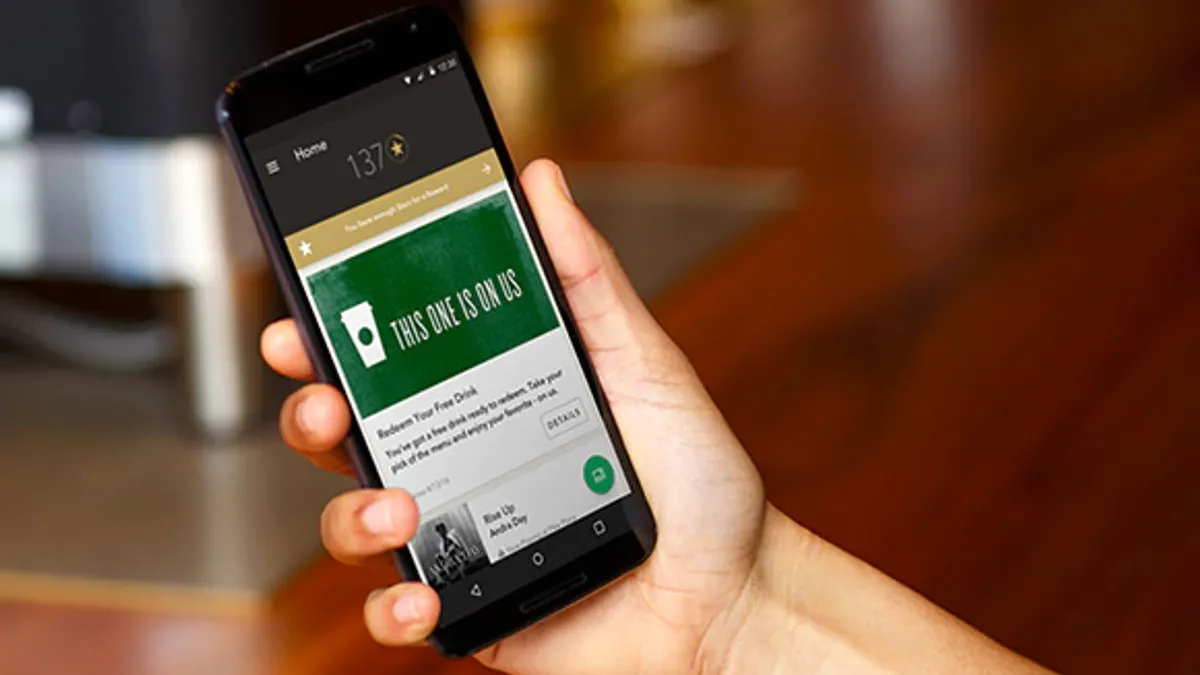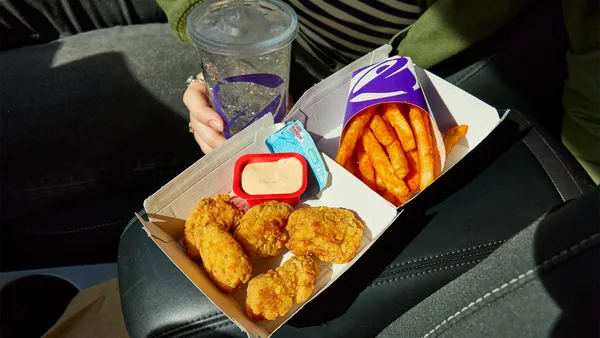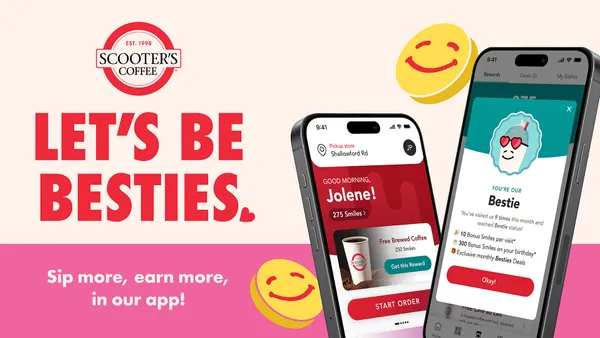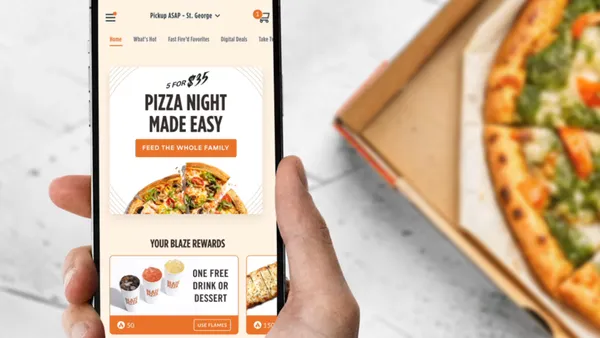Brief:
- Starbucks boosted its loyalty program membership by 13% to 16.8 million people during its latest quarter, the coffee chain announced in a conference call with analysts. Starbucks Rewards members made up 41% of sales in U.S. stores during the period, demonstrating the program's power to drive repeat business.
- At the end of last year, Starbucks revamped its loyalty program, moving away from frequency-based rewards to spend-based ones, Group President John Culver said during the call. Since the change, the chain's 90-day active membership has increased 25% year-over year. "We now have 8.3 million active 90-day members, and that is a significant step change in terms of the growth rate from what we've seen previously in the program," Culver stated.
- The company four months ago launched its loyalty program in China and added 1 million members during fiscal Q2 to bring the total to 8.3 million. Plans are in place to bring mobile order and pay to China by the end of fiscal 2019, Kevin Johnson, president and CEO of Starbucks, said during the call.
Insight:
By switching the focus of the loyalty program from frequency of visits to how customers spend, Starbucks is attempting to broaden the appeal of the loyalty program beyond it most loyal customers with the expectation that once consumers become loyalty members, they will visit more regularly to earn rewards. The growth in Starbucks' rewards program also underscores the importance of mobile in helping to solidify its relationships with key customers who are most likely to visit its stores. Loyalty rewards programs are a key mobile marketing strategy, considering that most consumers carry their smartphone with them wherever they go and many are increasingly adopting mobile payments like Apple Pay, contactless payments and Venmo.
Starbucks' revenue rose 4.6% to $6.31 billion during the quarter from a year earlier, in line with the average estimate of $6.32 billion by analysts. Comparable-store sales rose 4% in the U.S. and 3% globally. The company opened 319 stores during the quarter to bring its total to 30,184 worldwide.
Starbucks in March announced plans to upgrade its loyalty offering to give customers more choices and flexibility in redeeming rewards. Starting on April 16, it eliminated the two tiers of Starbucks Rewards — green and gold levels — to give a wider group of people a better chance of redeeming rewards, per CNBC. The company expanded its delivery service to 1,600 stores in seven major markets, and is evaluating how to refine the program and ensure top customer experiences, Johnson said during the call.
Starbucks' loyalty and mobile strategies are essential to vying with archrival Dunkin', which has aggressively marketed its mobile app and rewards program over the past two years. Dunkin' this month started testing a program at more than 1,000 locations to let customers earn points regardless of their payment method. Previously, members of its DD Perks program could only earn points toward free beverages by paying with enrolled Dunkin' gift card. The test lets customers accumulate points while paying with cash, credit, debit or a Dunkin' gift card, suggesting that the massive coffee chain is widening its focus to a larger group of consumers in order to encourage more people to join the rewards program.














